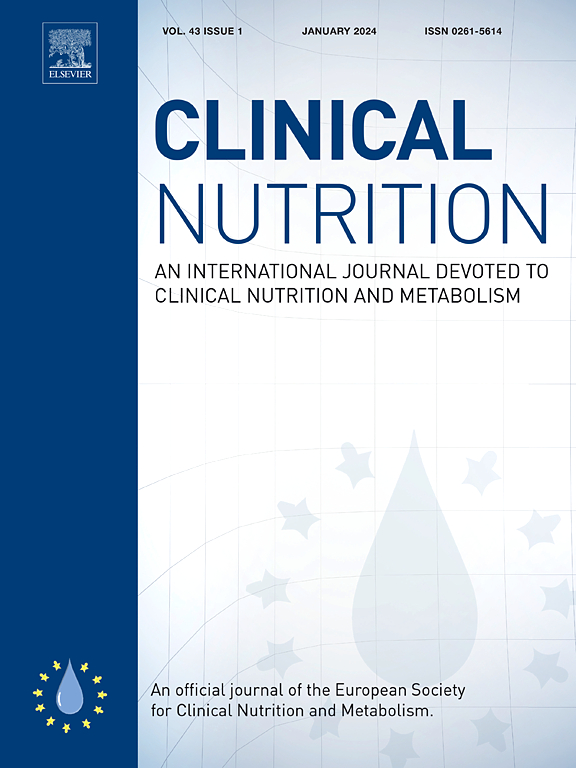Improving the growth of infants with congenital heart disease using a consensus-based nutritional Pathway—A follow up study
IF 6.6
2区 医学
Q1 NUTRITION & DIETETICS
引用次数: 0
Abstract
Background & aims
Congenital Heart Disease (CHD) is the most common congenital abnormality, affecting 9 per 1000 live births. Advances in surgical techniques have significantly improved survival rates but growth failure is associated with increased risk of mortality post-cardiac surgery. Improving growth amongst infants with CHD whilst awaiting surgery is an important component to reducing morbidity as well as improving longer term metabolic outcomes. A consensus-based nutrition pathway was developed and implemented into a regional paediatric cardiology service in 2017. The aim of this study was to evaluate the impact of the pathway in a larger cohort of infants with CHD in two epochs: pre-nutrition pathway implementation (Jan 2013–Dec 2016) and post-nutrition pathway implementation (Jan 2017–June 2023).
Methods
Growth measures were extracted from electronic patient records and z-scores were calculated. SuperImposition by Translation And Rotation (SITAR) models were constructed to develop a single fitted curve of growth velocity for each of the two epochs.
Results
Infants with CHD in the post-implementation group achieved significantly better growth outcomes in the first 4-months of life. In addition, after adjustment for group differences, weight gain velocity was significantly higher in the post-implementation epoch (p = 0.01). There was no detectable change in the prevalence of overweight or obese children at older timepoints, suggesting that the intervention did not promote the development of obesity although further analysis will be required as the cohort gets older.
Conclusion
A nutrition pathway developed to support growth in infants with CHD before surgery was associated with better growth outcomes during the first year of life compared to an epoch when nutrition support was only given for malnourishment. Achieving normal growth patterns during the first year of life may help to reduce the risk of metabolic disease in later life, although further research will be required to elucidate this.
求助全文
约1分钟内获得全文
求助全文
来源期刊

Clinical nutrition
医学-营养学
CiteScore
14.10
自引率
6.30%
发文量
356
审稿时长
28 days
期刊介绍:
Clinical Nutrition, the official journal of ESPEN, The European Society for Clinical Nutrition and Metabolism, is an international journal providing essential scientific information on nutritional and metabolic care and the relationship between nutrition and disease both in the setting of basic science and clinical practice. Published bi-monthly, each issue combines original articles and reviews providing an invaluable reference for any specialist concerned with these fields.
 求助内容:
求助内容: 应助结果提醒方式:
应助结果提醒方式:


